An HOA is comprised of a small number of homeowners within a neighborhood. They are elected and voted for by other community members or other HOA members.
While a vote and election are involved, an HOA board member is a volunteer position, they are not compensated for their time, and the board member accepts a complete set of responsibilities.
Additionally, board members are not permanent positions. Board members can resign or even be asked to leave by other board members. Change is inevitable, so when there are staff changes in a homeowner’s association board, it can add more work to an already challenging role.
An HOA President or your HOA management company should help the board members through the transition period to ensure that processes are in place for a seamless and stress-free experience and eventual transition of power to the replacement board member. If you’re working to create better strategies or don’t have one in place and want to know how to help your board members with staff changes – keep reading!
Why Resign?
While an HOA Board Member is elected with term limits, this does not mean they’re tied to the role for the entire year. Board members can resign and must provide written notice to the remaining board members.
On the other hand, board members can remove another member from office.
When there’s a staffing change, a board can hold an impromptu election and appoint a replacement with the community majority vote, or they can vote internally with only the HOA board members.
Keep in mind that if the board member resigns and their resignation does not take effect until a later date, they may participate in selecting their replacement.
Don’t take it personally if a board member resigns. There are plenty of reasons why. It could be because of:
- Their availability.
- They didn’t realize the time commitment.
- They may not be the best person for the role.
- Too much is happening in their personal lives.
An HOA board’s role is to enhance and serve the community. So if you elect a new board member or remove a board member – the decision should have the community’s best interest at heart.
How to Make Staff Changes Easier
Staff changes can cause your board a lot of unnecessary (or necessary) stress, and it all depends on what processes you have in place to make the transition easier.
When a member leaves, it could lead to additional work and responsibilities for the sitting board members.
However, an HOA Board president or HOA management company can implement ways to help board members during the transition period to help alleviate any stress.
Here are a few ways to make staff changes easier for your board members:
- Keep your current board members in the loop.
- Keep your current board members involved in the process and encourage conversations.
- Discuss the allocation of work in the interim
- Ensure your new board member’s training process or historical paperwork is in place.
Keep Your Current Board Members in the Loop
You first want to show your current board members that you understand the changes’ impact.
As humans, we can spot patterns and notice when something is out of the ordinary, so when there are unanticipated changes to our environment, it can be panic-inducing.
The most effective way to quell anxiety is to overcommunicate what’s happening and the steps you are taking as president. Spend meeting time and send emails discussing any organization or board member changes.
In these conversations, acknowledge your board member’s concerns and address them head-on. By overcommunicating, you can reduce those fears while also earning the trust of your board members.
We recommend taking the initiative. Rather than waiting for your board members to ask questions – overly communicate what’s happening and answer any questions before they’re asked.
To keep your board members in the loop, you want to:
- Be Transparent
- Overly communicate
- Effectively communicate
As opposed to blindsiding the members with a new change, like the resignation of a fellow board member, you can discuss the process and planning of replacing board members. We encourage you to schedule meetings separate from your regular board meetings. Spend that time explaining how a resignation will impact the different people within your board, present the direction you want to take, and the benefits you see. This meeting should create an open forum to enable questions and conversations to improve those plans.
Keep Your Current Board Members Involved in the Process and Encourage Conversations
Next, remember that your board members are a team and there to support you too. Work to encourage conversations and keep them involved. Organizational changes can periodically make team members feel like they have no control, so by actively including them in any changes, you’re solidifying the importance of their role within the board.
Staff changes within a board are typically a group decision; however, if a board member steps down, you want to keep current board members involved in the conversations about their replacement or allocation of work.
There are a few ways you can encourage conversations within a board:
- Give weekly updates and actively ask for feedback.
- Discuss any potential issues that could arise from your plans
- Remind the members why they joined an HOA board (i.e., creating a better, more prosperous community)
Overall any changes (including staff changes) must be done with the community’s growth in mind.
Discuss the Allocation of Work in the Interim
The best way to secure the success of your board is to implement changes immediately.
For example, if you have discussed how you will allocate work, start the change right away. If you take too long to implement any changes, it can give your board members time to overthink, create hypotheticals, and cause anxiety.
By executing changes quickly, you’re showing your board that they can depend on you to facilitate changes and work in the best interest of your board members and the community.
As time passes, check-in with your board to tackle any potential issues as you find a replacement board member. Remember, it’s much easier to fix minor problems than to ignore issues and let them turn into more significant problems.
Ensure your new board member's training process or historical paperwork is in place
Lastly, you want to fill that board member’s seat. While you may be able to operate with fewer board members – it may not always be the best decision.
Make sure to refer to your governing documents to see what expectations your HOA has in place when filling a board seat. For example, some states allow the board to appoint new members when there’s a vacancy, but others require a vote from the homeowners.
When a board member leaves, it opens up an opportunity for new members with new ideas to join the board, which can benefit the association in the long run.
Before your board member leaves, request that they leave documentation outlining their roles and responsibilities. This way, when you replace your board member, you have all the necessary paperwork and training documents available. With the proper documentation in place, your new board member has the tools available to jump right in and get started with a minimal learning curve.
Additionally, ensure that all board members have the tools to stay up-to-date with any organizational changes, have access to all resources, and are all on the same page where the community is concerned.
Different People, Different Opinions
HOA Boards are challenging. You have a group of different people with different opinions and backgrounds, and it’s difficult to predict when a change will occur and how it will affect your board and community.
We recommend implementing a plan to move efficiently when a board member resigns or is asked to leave. This way, your board can collectively work together to make decisions with your community in mind without the lingering stress of losing a board member.
When a board member steps down, take this as an opportunity to ask for feedback on their experience. You’ll find that the board member has knowledge and insight that you may be lacking. You can use their understanding to create a better experience for your sitting board members and incoming members.
Remember to be transparent with your community. When a board member steps down, it opens up the opportunity for a community member to step up. Encourage your neighbors to apply so that you can fill the board member’s seat quickly.
Lastly, when a board member resigns, they may continue living in that neighborhood and will be a part of the community that the HOA serves. Thank them for their efforts and show professionalism with every interaction.
An HOA’s job is to serve the community, so the best way to serve the community is to be prepared, communicative, and put the community first in all your decisions.
If you’re looking to improve your current HOA processes, or you’re looking to create a homeowners association for a new community, consider hiring a professional HOA management company like AMC Inc. (Association Management Concepts). We’ll work with you to streamline your processes, help make decisions for a new community, and support you in your growth. Contact us at 916-565-8080 ext. 321.







